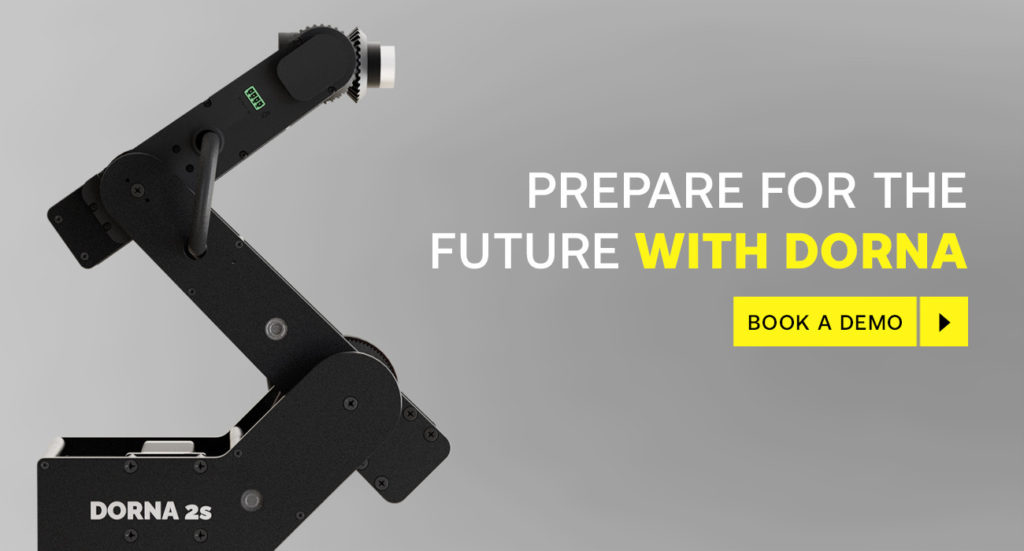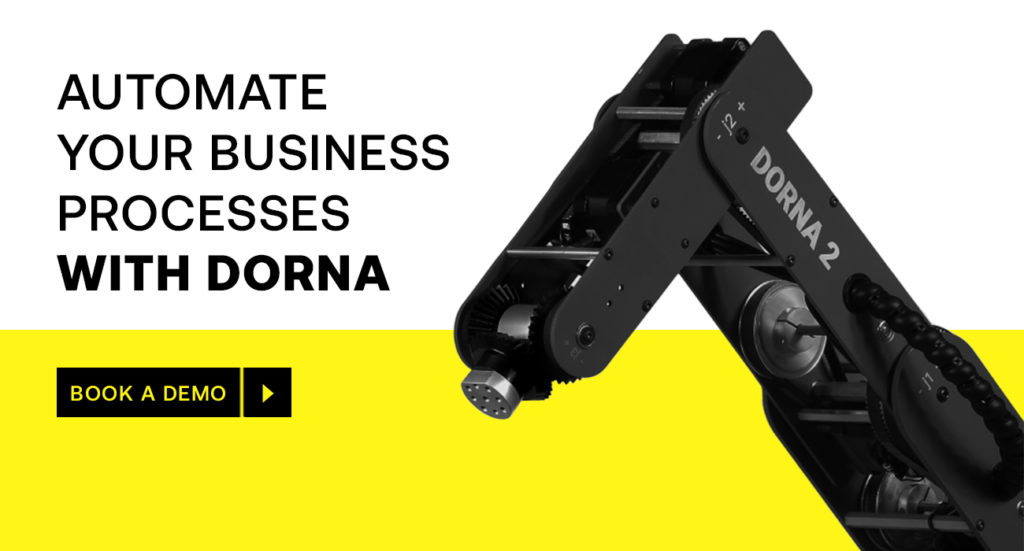Blogs
Elevate Your Laboratory By Automating These Tasks
It is well known that automation is not just a tool; it's a conductor, directing the laboratory processes at multiple…
15 minute read
In This Article
In the world of automation, robots, and their collaborative counterparts, cobots, are two distinct technological innovations, each with its captivating twist.
Cobots are masters of collaboration, designed to work harmoniously alongside humans thanks to their advanced safety features. On the other hand, robots can be programmed to execute a wide array of tasks, ranging from repetitive industrial processes to complex, precise operations, independently.
To unlock the maximum potential of automation for your business, you must gain a comprehensive understanding of the available options and a precise alignment with your specific needs.
Dorna is a premier provider of automation solutions for businesses of all sizes. We are renowned for delivering powerful, versatile, and safe-to-use robots across different industries.
The following blog provides an in-depth understanding of cobots and robots – from key differences and distinct applications to factors you should consider before making the right choice for your industrial processes.
Let’s understand the key differences between cobots and robots.
| Factors | Cobots | Robots |
|---|---|---|
| Safety features | Cobots are designed with safety as a top priority, typically incorporating advanced sensors and mechanisms so they can work safely alongside human workers. | Traditional robots may require additional safety measures, such as protective gear, safety barriers, restricted access zones, etc. |
| Flexibility and adaptability | Cobots are prized for their flexibility. They can be easily reprogrammed for various tasks, making them ideal for industries with frequently changing production requirements. | Traditional robots tend to be more specialized and rigid in their programming, making them better suited for repetitive and well-defined tasks, such as welding or painting. |
| Programming and integration | Cobots are known for their user-friendly interfaces and simplified programming; this allows workers with minimal technical expertise to swiftly train cobots for new tasks. | Traditional robots often demand a higher level of programming expertise, potentially necessitating the involvement of specialized robotics engineers. |
| Cost and return on investment | Cobots are often considered a more cost-effective option; their higher initial purchase price is offset by lower costs of integration and maintenance, ultimately leading to a quicker return on investment. | Traditional robots may have a lower initial purchase price, but they often come with higher integration and maintenance costs, resulting in a longer period before realizing a return on investment. |
| Payload and speed capabilities | Cobots, while not as powerful in payload and speed capabilities, are perfectly suited for lighter tasks that require dexterity, like electronics assembly where finesse and agility are paramount. | Traditional robots often excel in these areas; they can handle heavy loads and perform high-speed tasks with precision making them indispensable in industries like automotive manufacturing. |
| Level of human supervision | Cobots are designed to work in close proximity to humans, requiring minimal separation and reducing the need for extensive human supervision. | Traditional robots typically necessitate a greater degree of separation and human supervision, especially in high-speed and heavy-duty applications. |
| Environmental requirements | Cobots are generally more adaptable to a variety of environmental conditions functioning equally well in clean and unclean environments. | Traditional robots might require controlled and regulated environments to maintain their performance and longevity. |
| Degree of specialization | Cobots, with their adaptable nature, are more versatile than specialized ones. They can be deployed for multiple tasks within an organization, making them a compelling choice for small and medium-sized enterprises with diverse production needs. | The degree of specialization in traditional robots is typically high, as they are meticulously tailored for particular tasks, which can limit their versatility as compared to cobots. |
| Durability and longevity | Cobots have a shorter lifespan in demanding environments but are still suitable for a wide range of industries where round-the-clock operation is unnecessary. | Traditional robots are often built for endurance, with the ability to run continuously in demanding industrial environments. |
| Regulatory and compliance considerations | Cobots may be subject to less stringent safety regulations due to their collaborative nature. | Traditional robots, depending on their application, may need to meet more stringent safety standards, leading to increased compliance challenges and costs. |

Cobots and robots are becoming increasingly valuable assets in various sectors, yet their distinct strengths often lead to differing roles.
| Application | Cobots | Robots |
|---|---|---|
| Manufacturing | Cobots are making significant inroads in manufacturing, particularly in the electronics and consumer goods industries. They enhance productivity by working alongside human operators, performing pick-and-place, quality control, and packaging tasks with precision and consistency. | Traditional robots have long been the workhorses of manufacturing, excelling in automotive production and heavy industrial applications. They are valued for their high speed, precision, and ability to handle heavy payloads. |
| Healthcare | In healthcare, cobots are revolutionizing tasks such as medication dispensing, patient care, and laboratory work. Their ability to collaborate with medical professionals makes them essential in an industry where precision and human-robot interaction are critical. | Traditional robots in healthcare are often found in highly specialized applications, such as robot-assisted surgery — offering the precision and stability required for these delicate procedures. |
| Logistics | Cobots are streamlining logistics and warehousing operations by handling the tasks of order fulfillment and inventory management. Their flexibility and ability to adapt to changing demands are invaluable in the e-commerce era. | Traditional robots play a significant role in material handling and automation. guided vehicles in logistics and distribution centers. Their speed and payload capacity help meet the demands of high-volume warehouses. |
Before you determine the most suitable automation device for your needs, it’s essential to evaluate three critical aspects: your specific requirements, workspace conditions, and the future growth and demands of your company.
Here is a quick guide for you to navigate these areas and identify the crucial factors to examine:
Assessing your needs
When deciding between cobots and traditional robots, a thorough assessment of your production needs is essential. Consider factors such as task complexity, volume, and the potential for human-robot collaboration.
Evaluating the workspace
The physical environment in which the robots will operate is crucial. Cobots are designed to work in close proximity to humans, while traditional robots may require dedicated spaces with safety precautions in place.
Considering the future
Take into account the potential for changes in your production processes and industry regulations. Cobots’ adaptability may be an advantage in a rapidly evolving environment, while traditional robots may be better for long-term, stable processes.

In the ever-evolving realm of automation, the choice between cobots and traditional robots is a decision that can significantly impact your business’s productivity and efficiency. Therefore, understanding the key differences between these technologies and their respective strengths becomes vital.
While both have their places in various sectors, it is crucial to align your choice with your specific needs and workspace conditions. Additionally, consider the future potential and requirements of your company and make it a part of the long-term automation strategy.
Over the past few years, Dorna has established itself as a dependable and exceptionally efficient automation partner, providing versatile and easily accessible integration solutions with high-quality products and end-to-end services.
As the world of robotics continues to evolve, your choice today will shape the future of your business operations.
Discover Dorna robot’s application compatibility with your business needs.
Blogs
It is well known that automation is not just a tool; it's a conductor, directing the laboratory processes at multiple…
15 minute read
Blogs, Products
In this post, we will provide some insights into the main design principles of Dorna robotic arms.
28 minute read
Blogs
This blog delves into the transformative impact of cobots, highlighting their role in creating safe, efficient, and collaborative work environments.…
23 minute read
Blogs, News, Products
Dorna Robotics, a company based in California, is excited to announce the addition of a new robot to its existing…
8 minute read